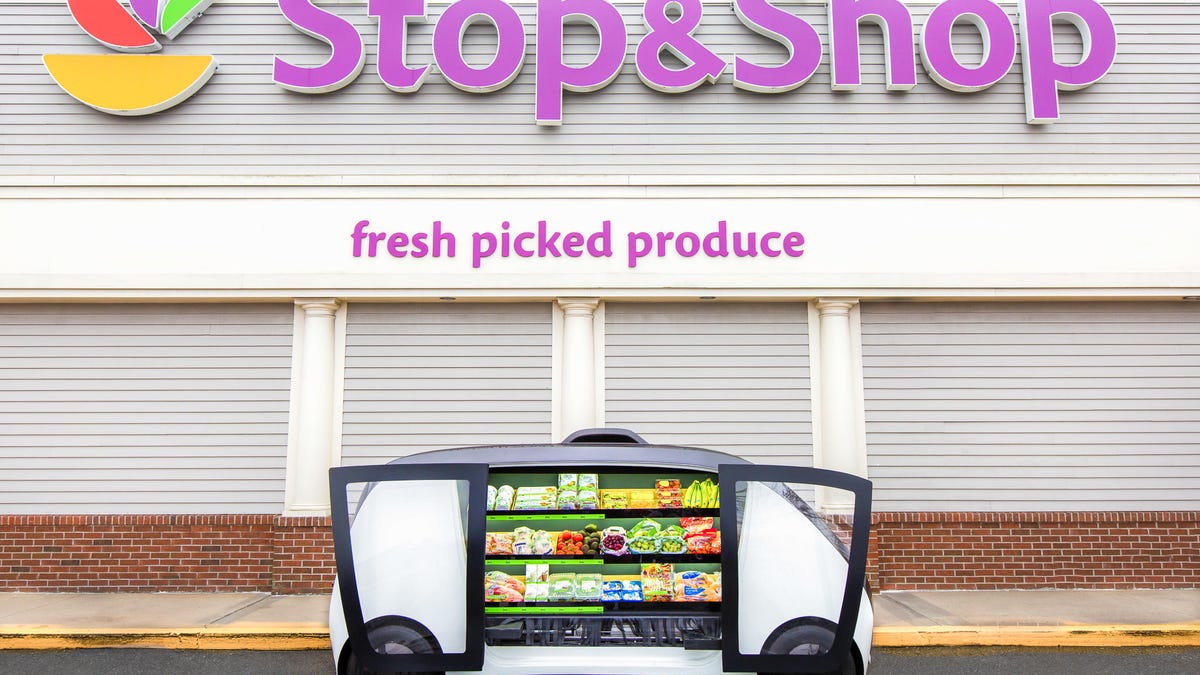Stop & Shop's grocery pods will bring the store to your house
It's a bit different than the grocery delivery robots we've covered in the past.
Later this year, instead of prebagged groceries arriving at your doorstep, you might end up with an entire grocery aisle, ready for the pluckin'.
Stop & Shop announced this week that it intends to deploy a small fleet of driverless grocery delivery vehicles in and around the Boston area. Beginning this spring, the pods won't be like other delivery services -- they will offer consumers a selection of produce and meal kits, and folks can pick what they want, like they were in the produce aisle at the store.
"[M]any of our customers want the opportunity to make their own choices when it comes to fresh produce, and we're proud to be the first retailer to engage with Robomart to address our customers' needs with their cutting-edge solution," said Mark McGowan, president of Stop & Shop, in a statement. Robomart, a San Francisco-based startup, will be supplying the vehicles for the pilot program.
Read more: The best meal-kit delivery services
Here's how it will work. Using a smartphone app, Stop & Shop customers can request a visit from Robomart's vehicle. When it shows up, they'll walk outside, unlock the doors and pick the produce and products they want. All that's left is to close the door and walk away. The vehicle itself uses RFID tech to determine which products have been purchase, and it'll email the consumer a receipt. This setup is a little different than what Kroger and Nuro are running in a pilot program, which requires the consumer to pre-order groceries online, with a bagged order eventually arriving at their door.
While the vehicle is referred to as driverless, it's technically driverless in the sense that the vehicle doesn't have a driver inside of it. The electric pods will actually have a remote pilot in charge of moving them around. They'll be periodically restocked so consumers don't have mostly empty pods showing up with a dearth of produce.


